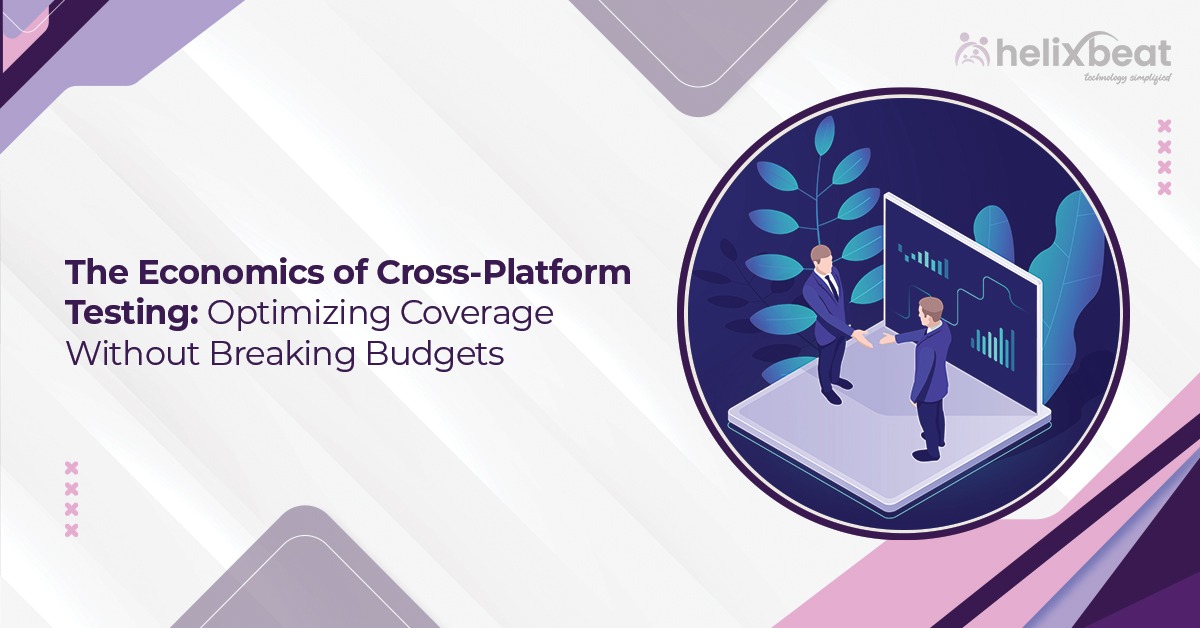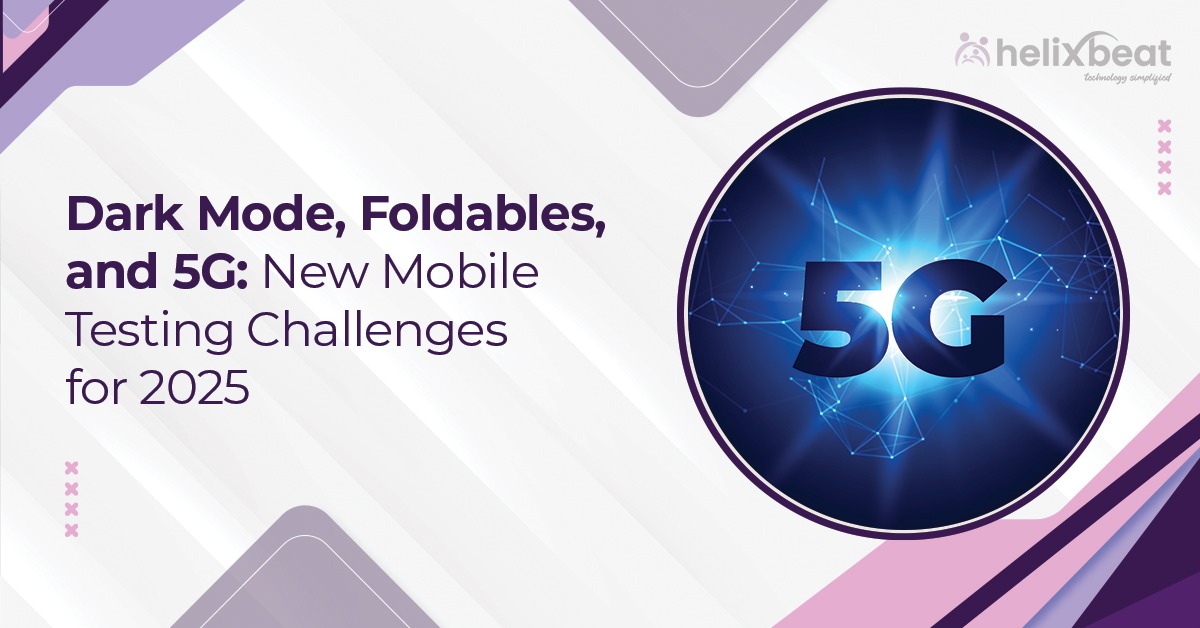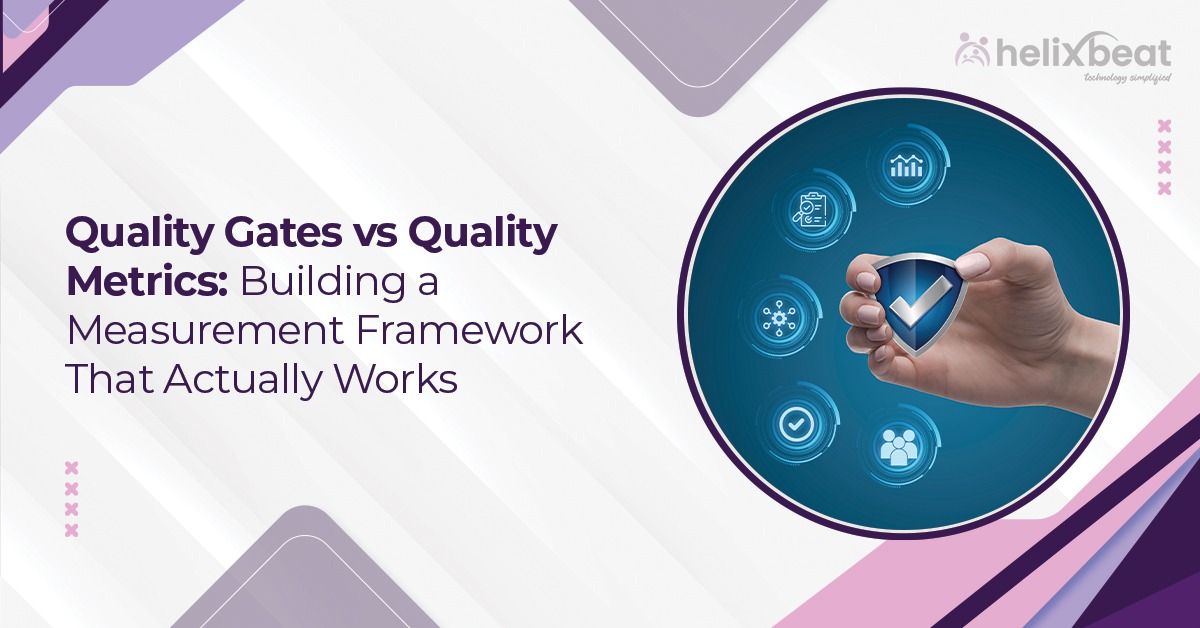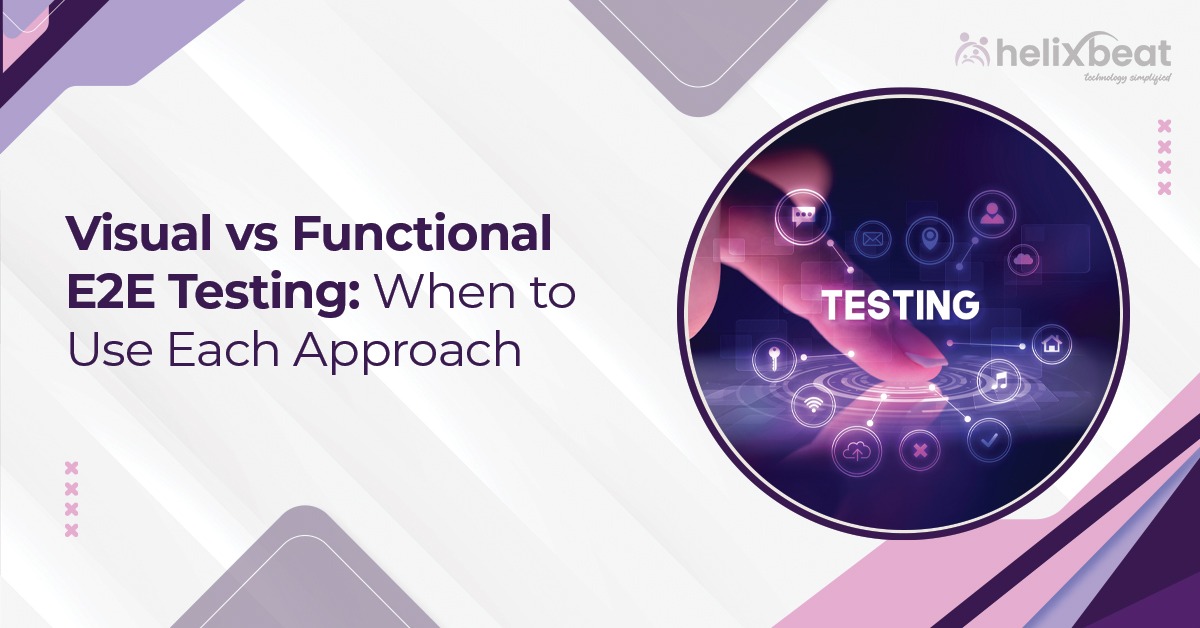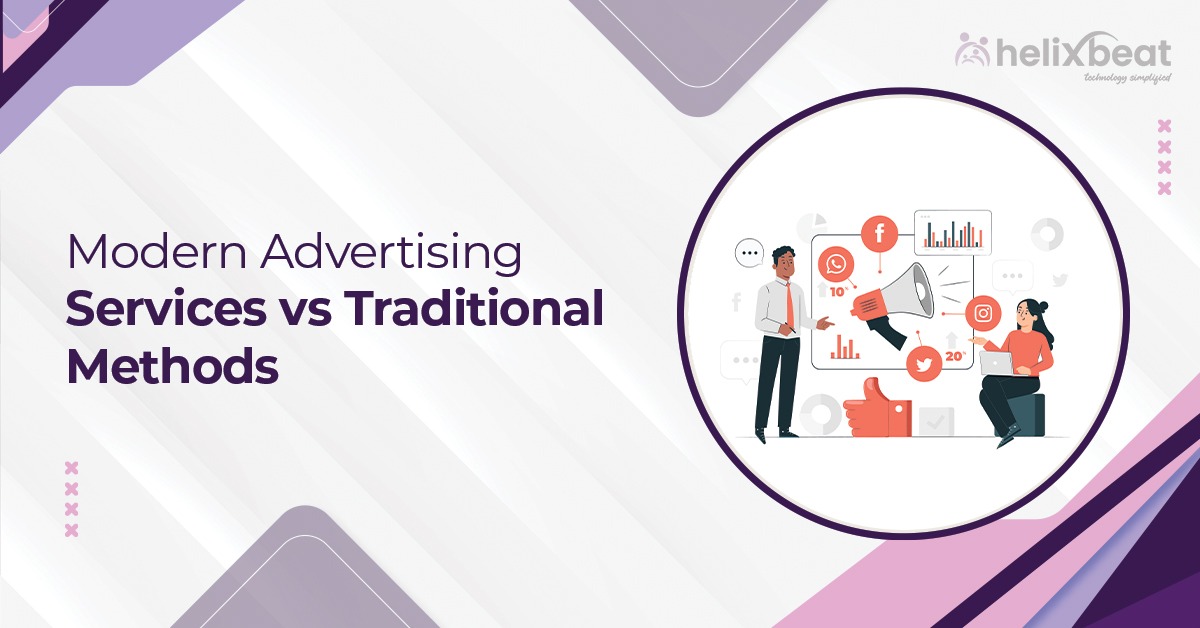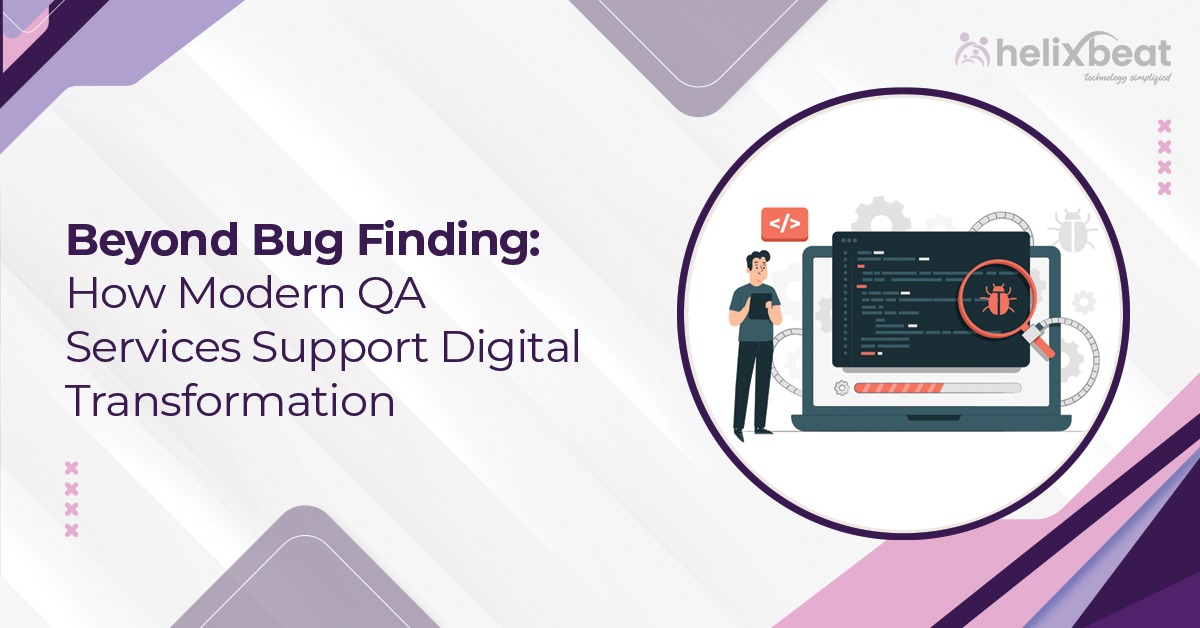Healthcare facilities handle sensitive information, patient care, and a variety of operations daily. This makes them prime targets for security breaches, and often, the security measures in place are not up to the task. Many hospitals and clinics still depend on outdated visitor management methods such as paper logs or manual check-ins, which lead to inefficiencies and security risks.
With healthcare security being more important than ever, what if there was a better, smarter way to keep your facility safe while also improving the visitor experience? Helixbeat’s VISTA, a visitor tracking system, provides exactly that. It’s the best visitor management systems that simplifies the check-in process while providing tight security and making healthcare operations run more smoothly.
In this blog, we’ll take a closer look at how VISTA’s visitor tracking system can help solve some of the biggest challenges in healthcare security and why it’s one of the best visitor management systems out there today
Table of Contents
The Challenges of Healthcare Security: Real Incidents and Their Impact
Healthcare facilities face numerous security risks daily. From protecting patient information to ensuring that only authorized individuals have access to restricted areas, healthcare security has a lot of ground to cover. And unfortunately, many hospitals and clinics still struggle with these issues due to outdated and inefficient systems.
Here are a few key security challenges healthcare facilities often face:
1. Unauthorized Access
Hospitals and clinics are common targets for unauthorized access. Take, for instance, an incident at a hospital in California, where a man gained access to an emergency room using a forged visitor ID. This is an example of how easy it can be for someone to bypass security checks if the visitor management process isn’t secure. It shows how risky it is to rely on paper logs or basic visitor badges for access control.
2. Data Breaches
Healthcare facilities store sensitive data such as medical records, personal patient information, and insurance details. A data breach in 2020 at a hospital in Ohio revealed just how serious these risks can be. An unauthorized visitor was able to access the hospital’s systems because the facility lacked a strong visitor tracking system. Sensitive patient data was compromised, and the hospital faced significant financial and reputational damage. This highlights the need for a more secure way to track visitors and protect private information.
3. Safety of Staff and Patients
Another challenge healthcare facilities face is the safety of staff and patients. A healthcare facility in New York faced an alarming situation when an unscreened visitor entered a psychiatric ward, leading to a violent incident. This could have been prevented with a better visitor management system that restricts access based on visitor type and ensures that only those with proper clearance are allowed in certain areas.
These real-life examples emphasize just how important it is for healthcare providers to have a solid system in place for tracking and managing visitors. Without a proper visitor tracking system, the risks are too great to ignore.
4. Lack of Visitor Awareness of Security Protocols
Many visitors are unfamiliar with the security protocols in place at healthcare facilities. For instance, some may inadvertently enter restricted areas or forget to sign in upon arrival. A healthcare facility in Texas experienced a situation where a visitor, unaware of the hospital’s security protocols, wandered into a restricted ICU area, causing a security breach. This incident highlighted how a lack of visitor education regarding security measures can pose risks to patient privacy and hospital operations.
5. Inadequate Monitoring of Visitor Movements
Another major challenge healthcare facilities face is inadequate monitoring of where visitors go once they enter the building. Some healthcare institutions rely on physical security personnel or CCTV footage to monitor visitors, but this can be ineffective and inefficient. In one incident at a UK hospital, unauthorized visitors accessed patient care areas without being noticed, which led to potential security risks. With large healthcare facilities spread over multiple floors and departments, manually monitoring visitors is not enough. Without real-time visitor tracking system of where visitors are, healthcare facilities face difficulty responding to security issues quickly.
6. High Volume of Visitors in Emergency Situations
Emergency departments in healthcare facilities often experience a high volume of visitors, from patients’ family members to first responders and volunteers. In these high-stress situations, managing and monitoring who is in the building becomes much harder. A case in Florida exemplified this challenge when a high volume of visitors entered a trauma unit after a major accident. Many of these visitors were not adequately screened, leading to confusion and delays in patient care. Without a proper visitor tracking system, it becomes impossible to ensure that only authorized visitors enter critical areas, potentially jeopardizing patient safety.
7. Insufficient Vetting of Contractors and Vendors
Healthcare facilities frequently welcome contractors, maintenance workers, and vendors to handle essential tasks. In some cases, these individuals may have access to sensitive equipment, patient rooms, or private data. A contractor working on a renovation project at a hospital in New Jersey was able to access a server room that contained sensitive patient information, as there were no stringent visitor management practices in place. This breach led to a significant compromise of patient confidentiality. Hospitals that fail to properly vet contractors or establish visitor management procedures risk security breaches like this.
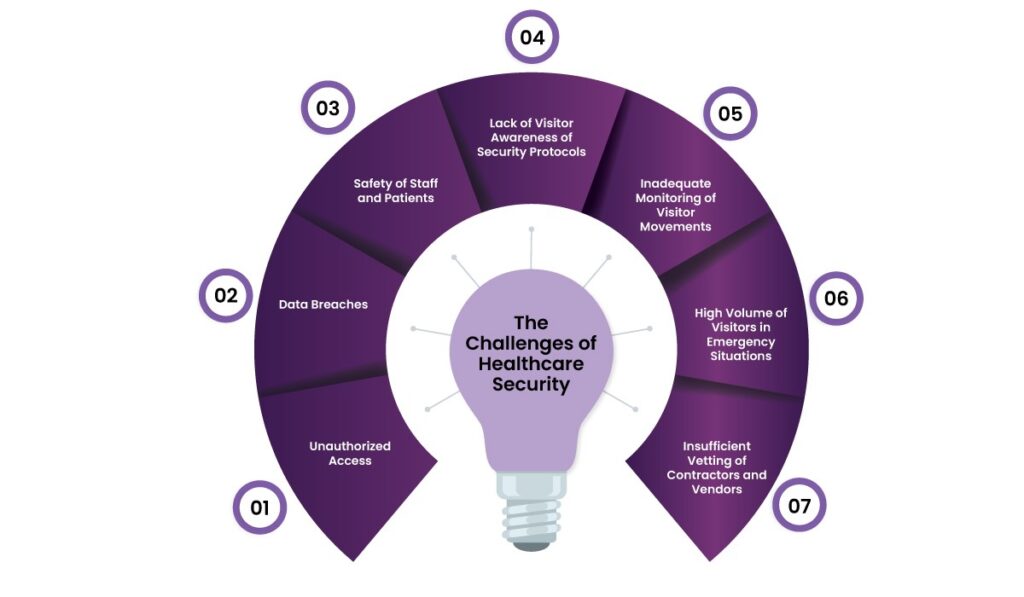
Why Visitor Management is Critical in Healthcare
Visitor management in healthcare is crucial not just for controlling access but also for ensuring the safety and privacy of patients and staff. Healthcare facilities need to be able to confidently track visitors, monitor their access to restricted areas, and guarantee that only authorized individuals are granted entry to sensitive zones. This is especially important because any security lapse can result in patient harm, loss of sensitive data, or operational disruptions.
Here are some of the key reasons why proper visitor management matters in healthcare:
1. Patient Privacy and Safety
Patient privacy is one of the most critical aspects of healthcare security. Unauthorized visitors who have access to private areas can jeopardize this privacy and cause potential harm to patients. For example, a visitor might gain access to sensitive information or disrupt medical procedures. Healthcare institutions need to ensure that only authorized individuals have access to restricted areas, and this requires an effective visitor tracking system.
2. Regulatory Compliance
Healthcare facilities are required to follow strict security regulations to comply with industry standards such as HIPAA in the United States. These regulations govern patient privacy, the storage of sensitive data, and the need for secure access to patient rooms and care facilities. A visitor tracking system can help healthcare organizations comply with these regulations by ensuring that all visitors are logged, monitored, and given access only to authorized areas.
3. Streamlining Operations and Reducing Wait Times
A good visitor management system not only enhances security but also improves operational efficiency. Healthcare facilities, particularly those with high patient volumes, can benefit from streamlining the visitor check-in process. With a system like VISTA, visitors can pre-register online or use touchless kiosks, which speeds up check-ins and reduces waiting times at the front desk. This improves the overall visitor experience while freeing up front-desk staff to focus on more important tasks.
4. Improving Emergency Response
In an emergency situation, having a clear record of everyone in the building is crucial for evacuation and safety procedures. A digital system like VISTA allows healthcare facilities to track all visitors in real-time, ensuring that every person on the premises is accounted for. This feature can make the difference between a smooth, efficient evacuation and unnecessary delays during a crisis.
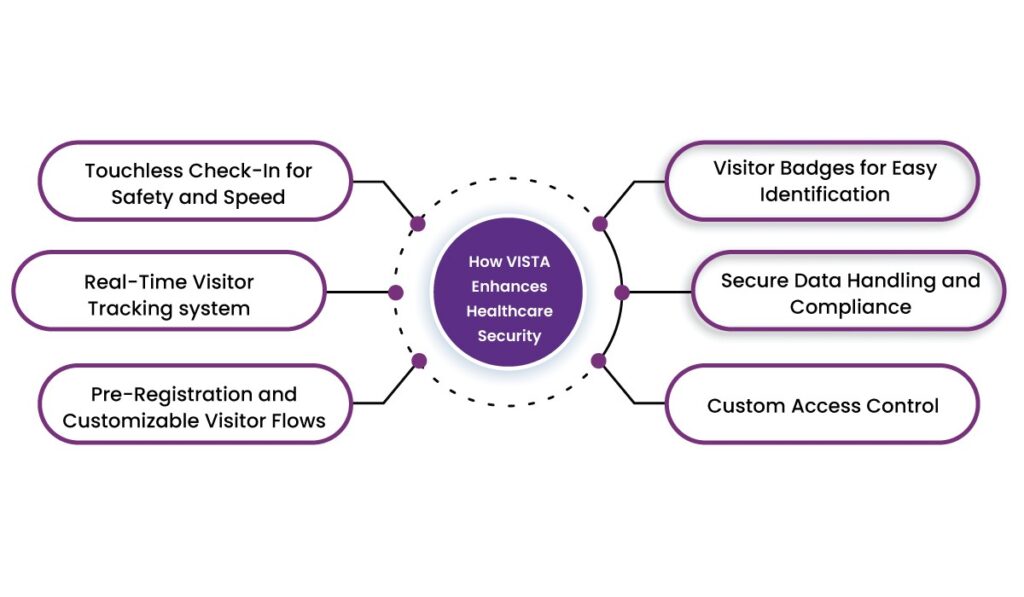
How VISTA Enhances Healthcare Security
Helixbeat’s VISTA is one of the best visitor management systems available, offering a range of features that directly address the security challenges faced by healthcare organizations. By automating and digitizing the entire visitor management process, VISTA ensures that every visitor is accounted for and monitored from arrival to departure.
1. Touchless Check-In for Safety and Speed
Given the global health concerns, especially after the COVID-19 pandemic, contactless check-in options are a must in healthcare facilities. VISTA allows visitors to check-in by scanning a QR code or using a self-service kiosk, eliminating the need for physical contact. This not only speeds up the check-in process but also helps reduce the spread of germs, which is critical in healthcare settings.
2. Real-Time Visitor Tracking system
With VISTA, healthcare facilities can track visitors in real-time. As soon as a visitor checks in, the system sends an instant notification to the host, ensuring that staff are prepared. The system also logs visitor entry and exit times, providing a detailed record of who was in the facility and when. This visitor tracking system makes it easier to monitor visitor movements, improving security and accountability.
3. Pre-Registration and Customizable Visitor Flows
VISTA allows visitors to pre-register online before arriving, which means no delays at the front desk. This is particularly useful for healthcare facilities where visitors may be entering to see patients or attend meetings. Pre-registration also ensures that the healthcare facility has a record of who is coming in advance, which can be used to run background checks if necessary. The system also offers customizable visitor flows, which means hospitals can tailor the check-in process to meet their specific needs.
4. Visitor Badges for Easy Identification
When visitors check in, they receive a visitor badge with their photo and information, making it easy for staff and security to identify them. This feature is especially important in healthcare settings where patients may be vulnerable and unable to recognize unauthorized individuals.
5. Secure Data Handling and Compliance
With VISTA, all visitor data is securely stored and compliant with regulations such as GDPR and HIPAA. This eliminates the risk of data breaches that could lead to fines and legal trouble. The system ensures that all visitor information is encrypted and stored in a secure cloud, preventing unauthorized access.
6. Custom Access Control
VISTA allows healthcare facilities to control access to sensitive areas based on the type of visitor. For example, a vendor may be restricted from entering patient rooms, while family members may have restricted access to certain areas of the hospital. This feature allows hospitals to control who goes where and when, enhancing overall security.

Conclusion: The Future of Healthcare Security with VISTA
In the healthcare industry, security isn’t just a matter of keeping people safe; it’s about protecting sensitive data, ensuring the well-being of patients, and complying with strict regulations. With the increasing complexity of healthcare environments, traditional visitor management methods are no longer sufficient.
Helixbeat’s VISTA visitor management solution provides a comprehensive, efficient, and secure way to manage visitors, offering peace of mind to healthcare providers. By implementing VISTA, healthcare facilities can streamline operations, improve security, and ensure compliance with industry regulations.
If you’re looking for the best visitor management system that enhances both security and efficiency, VISTA is the answer. From real-time visitor tracking system to customizable access control and secure data handling, VISTA is the future of visitor management in healthcare. Don’t let outdated systems put your patients, staff, or data at risk—invest in VISTA today and experience the difference it can make in your facility.
Frequently asked question
- What is a visitor tracking system?
A visitor tracking system helps manage and monitor visitors entering a building, ensuring security and tracking their information.
- How does Helixbeat’s VISTA improve healthcare security?
VISTA helps track and manage visitors in healthcare settings, providing real-time alerts, pre-registration, and secure check-ins to enhance safety.
- Is VISTA easy to set up in healthcare facilities?
Yes, VISTA is designed to be easy to implement and can be customized to meet the specific security needs of healthcare organizations.
- Does VISTA comply with data privacy laws like HIPAA?
Yes, VISTA is built to ensure compliance with data protection laws, including HIPAA, so patient and visitor information is securely managed.
- Can VISTA be integrated with other security systems?
Yes, VISTA can integrate with existing security systems like surveillance cameras and access control systems for better overall security.
- How does VISTA help improve patient safety?
By managing visitor access and tracking who enters healthcare facilities, VISTA helps protect patients and staff from unauthorized visitors.
- What are the main benefits of using VISTA in healthcare?
VISTA offers faster check-ins, better security, compliance with privacy laws, and improved visitor management to make healthcare facilities safer and more efficient.
How can I request a demo of VISTA for my healthcare facility?
You can easily book a free demo of VISTA through Helixbeat’s website to see how it works and how it can benefit your healthcare facility.


